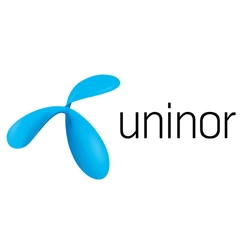
2G spectrum issue-related concerns notwithstanding, Uninor has gained ground in the Indian telecom space in just 20 months since it entered the market.
The operator crossed the 25 million subscriber mark at end-May 2011, thereby becoming the country’s eighth largest service provider in terms of user base.
According to Sigve Brekke, managing director, Uninor, “There is some time before we reach our long-term goal in this respect, but we are encouraged by the progress we are making.”
Though Uninor’s service offerings are creating a user niche, the company is facing tough times with regard to the 2G spectrum issue. Sanjay Chandra, former chairman, Unitech Wireless, which has a 32.75 per cent in Uninor, had been indicted on grounds that the operator had been one of the biggest beneficiaries of the 2G spectrum allotment. The case is currently being heard by the Supreme Court. Earlier, Norway-based Telenor, Uninor’s parent company, had asked Chandra to step down. In a statement, Glenn Mandelid, director of communications, Asia, Telenor Group, said, “Withdrawing from the chairman’s position is the most appropriate and decent thing for Sanjay Chandra to do given the current circumstances. It is of vital importance that the running business of our Indian operation is not hampered.”
Performance so far
Industry experts agree that for a company which entered the hyper-competitive telecom sector about two years ago, Uninor’s performance has been better than expected. According to Dr Mahesh Uppal, director, ComFirst, “Uninor has managed to play the game a bit differently from the other new players, which is evident from the subscriber numbers it has managed to add. Going forward, the company may have a few more surprises up its sleeve.”
If it has to compete with big players like Bharti airtel, Vodafone Essar and Reliance Communications (RCOM), Uninor would need to play a deft hand.
It was among the several telecom companies who sought a mobile licence from the Department of Telecommunications (DoT) in 2008. The operator received a pan-Indian licence and commercially launched services in December 2009 in seven circles, expanding to 13 circles in June 2010.
Uninor’s services are currently available in the Uttar Pradesh (East and West), Bihar, Orissa, Kolkata, West Bengal, Tamil Nadu, Karnataka, Kerala, Andhra Pradesh, Mumbai, Maharashtra and Gujarat circles. It has also received spectrum for rolling out services in 21 of the 22 service areas.
In April 2010, the company took the industry by surprise by launching the 24x7 Badalta Discount plan, which offers changing discounts on calls based on network traffic. The discounts vary according to the location and time. At the same location, the discount changes on an hourly basis. The plan has had a positive impact on the operator’s subscriber base.
So far, Uninor has followed a simple strategy, which is based on three factors – mass market distribution, basic service delivery and cost-efficient operations.
Market position
These efforts seem to have paid off. As of June 2011, the company’s user base stood at 26.33 million, accounting for a 3.09 per cent market share. According to operator data, Uninor’s ARPU in the quarter ended March 2011 was Rs 39.
Among the six new players, Uninor held 64 per cent market share in its 13 areas of operation during June 2010-June 2011, as compared to Sistema Shyam TeleServices Limited’s 17 per cent, Videocon’s 11 per cent, S Tel’s 5 per cent, Etisalat’s 2 per cent and Loop Telecom’s 1 per cent. In five circles (Kolkata, West Bengal, Mumbai, Gujarat and Bihar), Uninor has been among the top three operators since its service launch. In the Uttar Pradesh (East and West), Andhra Pradesh, Maharashtra and Goa, Kerala and Orissa circles, it is among the top five telecom service providers.
In terms of market share, the company is behind RCOM and Tata Teleservices Limited in Mumbai; RCOM in Kolkata; Vodafone Essar and RCOM in Gujarat; and Vodafone Essar and Bharti airtel in West Bengal.
Recent initiatives
Over the past year, new products and differentiated value-added services (VAS) have played an important role in subscriber additions for the operator. This has helped the company stay afloat despite its involvement in the 2G spectrum issue and the Telecom Regulatory Authority of India threatening to cancel its licence due to non-compliance with licence conditions (a decision on this is yet to be taken).
Retail is another key focus area for the company. Uninor has a strong presence in this segment with products such as SIM cards and recharges available at 320,000 points of sale and 622 exclusive stores through 11,699 distributors. The operator also has a large tower portfolio comprising over 26,600 towers.
Meanwhile, Uninor has asked DoT for an additional 1.8 MHz of spectrum in eight circles, based on the subscriber-linked criterion.
Financials
According to Telenor, Uninor’s revenues for the quarter ended June 2011 increased by 32 per cent over the previous quarter. The operator’s earnings before interest, taxes, depreciation and amortisation loss were NOK 54 million lower than the previous quarter. Its capex for the quarter was NOK 186 million and the total number of active sites stood at 26,623.
Conclusion
Uninor’s long-term target is to establish itself among the top six operators in each of its circles. To this end, it plans to continue with its no-frills approach and offer VAS and prepaid offerings.
According to Uppal, Uninor has the potential to sustain itself as a long-term player in the market, especially with Telenor’s legacy and aggressive marketing strategies. “Uninor’s approach seems to be working. Its user numbers are a clear indicator of this. Besides, its promoter Telenor is a formidable company, especially in the European and South Asian markets,” he says.
However, experts feel that the company’s involvement in the 2G spectrum controversy may dampen its spirits in the short term.
Uninor’s journey in the Indian market has been a bumpy ride. While industry analysts are confident that it is here to stay, the operator has to resolve various issues with the government before setting out to consolidate its position in this market.